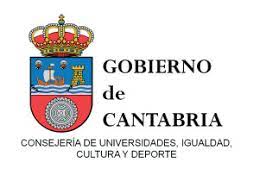La posibilidad de ser otro: archinarrador, mito y palimpsesto en La saga/fuga de J.B.
DOI:
https://doi.org/10.55422/bbmp.792Palabras clave:
Gonzalo Torrente Ballester, Archinarrador, Mito, Palimpseto, IdentidadResumen
Exponemos con brevedad el empleo del archinarrador en esta novela, como centro de la indagación sobre la identidad del narrador, de otros personajes y de la Historia de Castroforte del Baralla o la identidad colectiva. Además, estudiamos el mito como una narración que define la naturaleza de la localidad y que avanza a lo largo del texto mitificando y desmitificando también la imagen de esta. Por último, analizamos la transformación que se produce en clave de palimpsesto o reescritura a partir de elementos que se mantienen en el tiempo.
Descargas
Publication Facts
Reviewer profiles N/D
Author statements
Indexado: {$indexList}
- Academic society
- Sociedad Menéndez Pelayo
- Editora:
- Sociedad Menéndez Pelayo
Estadísticas globales ℹ️
|
223
Visualizaciones
|
166
Descargas
|
|
389
Total
|
|
Citas
BLACKWELL, Frieda Hilda (1985) The game of literature. Demythification and parody in novels of Gonzalo Torrente Ballester. Valencia. Albatros hispanófila.
CARMELO, Urza (1992) Historia, mito y metáfora en «La saga/fuga de J.B.» de Torrente Ballester. Michigan: UMI, Dissertation Information Service.
ESTEVE MACIÁ, Susana (1994) La fantasía como juego en «La saga/fuga de J. B. Alicante. Secretariado de Publicaciones de la Universidad de Alicante.
GARCÍA GILA, Juan Ramón (1985) «Las voces de La saga/fuga de J. B. (aproximación al problema del narrador)». Rilce. 1, 2. DOI: https://doi.org/10.15581/008.1.27242
GIL GONZÁLEZ, Antonio Jesús (2001) Teoría y crítica de la metaficción en la novela española contemporánea: A propósito de Álvaro Cunqueiro y Gonzalo Torrente Ballester. Salamanca. Ediciones Universidad de Salamanca.
GIMÉNEZ GONZÁLEZ, Alicia (1981) Torrente Ballester. Barcelona. Barcanova.
LOUREIRO, Ángel G. (1990) Mentira y seducción: la trilogía fantástica de Torrente Ballester. Madrid. Castalia.
MAESTRO, Jesús G. (2002) Cide Hamete Benengeli y los narradores del “Quijote”. Alicante. Biblioteca Virtual Miguel de Cervantes.
REYES, Graciela (1984) Polifonía textual: la citación en el relato literario. Madrid. Gredos.
RIVERO IGLESIAS, Carmen (2022) «Técnica y subversión en el primer franquismo: El casamiento engañoso de Gonzalo Torrente Ballester». RILCE. Revista de Filología Hispánica. 38(1). 290-309. DOI: https://doi.org/10.15581/008.38.40613
TORRENTE, Isabel (1997) La Historia en la narrativa de Torrente Ballester. Ángel Abuín, Carmen Becerra y Ángel Candelas (coord.). La creación literaria en Gonzalo Torrente Ballester. Vigo. Tambre. 99-110.
TORRENTE BALLESTER, Gonzalo (1975) El Quijote como juego. Madrid. Ediciones Guadarrama.
TORRENTE BALLESTER, Gonzalo. (1982) Los cuadernos de un vate vago. Barcelona. Plaza y Janes.
TORRENTE BALLESTER, Gonzalo (2010) La saga/ fuga de J. B. Carmen Becerra, Antonio J. Gil González (eds.). Madrid. Castalia.
SEVILLA-VALLEJO, Santiago (2011) «Progresión y repetición cíclica en la historia de Castroforte del Baralla». La Tabla Redonda: anuario de estudios torrentinos. 9. 39-52.
SEVILLA-VALLEJO, Santiago (2015) «El cronotopo literario “París” en La saga/fuga de J. B., de Gonzalo Torrente Ballester». Letra 15. Revista digital de la Asociación de Profesores de Español «Francisco de Quevedo». 3.
SEVILLA-VALLEJO, Santiago (2017) Cómo escribir ficciones según Gonzalo Torrente Ballester. Saarbrücken. Editorial Académica Española.
SEVILLA-VALLEJO, Santiago, GARIJO BELLOT, Noelia (2021) La evolución de la poética de Gonzalo Torrente Ballester en relación con la censura. Logos: Revista De Lingüística, Filosofía y Literatura. 31(1). 103–118. https://doi.org/10.15443/RL3106 DOI: https://doi.org/10.15443/RL3106
VELASCO MAÍLLO, Honorio Manuel (1989a). Las leyendas de hallazgos y de apariciones de imágenes. Un replanteamiento de la religiosidad popular como religiosidad local. María Jesús Buxó i Rey, Salvador Rodríguez Becerra, León Carlos Álvarez y Santaló (coord.). La religiosidad popular. vol. 2. Barcelona. Anthropos. 401-410.
VELASCO MAÍLLO, Honorio Manuel (1989b). Leyendas y vinculaciones. La Leyenda: antropología, historia, literatura. Actas del coloquio celebrado en la Casa de Velázquez. Madrid. Universidad Complutense. 115-132.
Descargas
Publicado
Cómo citar
Número
Sección
Licencia

Esta obra está bajo una licencia internacional Creative Commons Atribución-NoComercial 4.0.







